Ultrasound Teeth Whitening
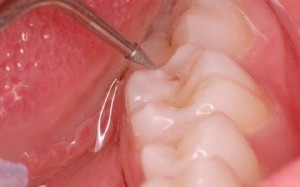
Ultrasound Teeth Whitening, or else, professional brushing is a necessary preventive procedure.
Thanks to ultrasonic cleaning, it is possible to remove hard dental deposits and soft plaque.
Ultrasonic whitening removes plaque from the surface of enamel resulting from the use of drinks that stain your teeth (red wine, tea, coffee, berries), as well as tobacco smoke.
As a result of the procedure, the teeth can become whiter by two or three tones, i.e. teeth get their original shade.
Does it hurt to conduct ultrasonic clarification
- If the patient has healthy and strong teeth, then their cleaning with ultrasound will not be accompanied by a state of discomfort.
- In the event that the teeth are sensitive to the effects of hot and cold, it may be necessary to anesthetize.
Cleaning mechanism
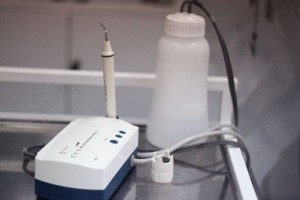
Whitening is carried out by a direct effect on the dental deposits of an ultrasonic wave, which comes from a special nozzle in the form of a rod.
Hard dental deposits are difficult to withstand under any mechanical influence, and enamel destruction can occur when using chemical cleaning methods.
The effectiveness of toothbrushing with ultrasound is much higher than after manual intervention.
After cleansing the teeth from plaque, they are polished. As a result, plaque cannot be deposited on a smooth surface for a longer time.
How often can I lighten my teeth?
The procedure is carried out only in the dentist’s office using an ultrasonic scaler.
- Ultrasound bleaching can be done every six months.
- If there are braces in the oral cavity, the cleaning frequency can reach up to four times a year.
The choice of a dentist for an ultrasonic whitening procedure should be especially careful. A dentist without the appropriate qualifications is able to carry out the procedure with violations, which may result in microcracks and enamel chips. The long-term consequences of such whitening will be a caries disease.
After ultrasonic bleaching, fluorination is necessarily carried out, which is a preventive measure against caries.
How is
For whitening, an ultrasonic scaler is used, equipped with a special sharpening that does not injure tooth enamel.
- Ultrasound is transmitted to the tip of the scaler and affects the boundary between the enamel and plaque.
- Using a stream of water and ultrasound, soft and hard plaque is removed.
- To give the enamel a smooth surface, it is polished with a special brush and paste.
The duration of the procedure is an average of half an hour. Repeat the procedure after six months.
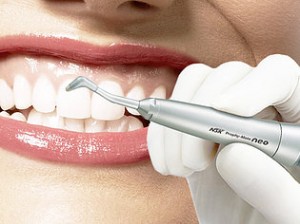
What is forbidden after brushing your teeth with ultrasound
During cleaning, gum and enamel damage may occur.
Therefore, it is recommended to observe the following rules:
- Thorough oral hygiene at least twice a day.
- Do not eat foods that can stain your teeth.
- After eating, remove food debris from the interdental spaces with dental floss.
- Eating solid foods (vegetables, fruits) to prevent plaque formation.
Contraindications
The procedure for ultrasonic teeth whitening cannot be carried out in the following cases:
- The presence in the oral cavity of orthopedic structures.
- The presence of dental implants.
- Heart disease (arrhythmia).
- If the patient suffers from asthma.
- Respiratory diseases: acute respiratory infections, chronic bronchitis.
- Hypersensitivity of teeth.
- The presence of milk teeth.
- Period of a changeable bite of teeth.
- With hepatitis.
- AIDS.
- If the patient is ill with tuberculosis.
- Glaucoma disease.
- With oncological diseases.
- The presence of a pacemaker.
- After surgery on the retina.
- With diabetes.
Undesirable consequences
- An excessively white shade of teeth that is not natural and can cause visual deception. People around you will perceive teeth such as artificial teeth.
- Increased tooth sensitivity for cold and hot drinks, the use of which causes pain.
Video: “Tartar Removal”
Cost
It should be noted that price for this service may vary in different clinics and depend on the qualifications of the dentist, the amount of work and other factors.
| Type of service | Prices (rub.) |
| Ultrasonic cleaning of 1 tooth | 110 |
| Professional brushing of all teeth | 2500 |
| Tooth fluoridation | 300 |
Reviews
- Three months ago I did ultrasonic teeth whitening. The procedure was painless, so the cleaning was carried out without anesthesia. There was discomfort during the removal of plaque under the gums. In the end, they polished my teeth with a special paste, as it turned out, to protect the enamel. Then they polished teeth and even a filling. I was satisfied with the result. Now I will always whiten my teeth this way.
- A couple of weeks ago I went to the dentist about gum disease and toothache, plus the gums started to bleed. The doctor examined me and prescribed a professional toothbrushing with ultrasound. Removing tartar and the presence of a nasty sound turned out to be very unpleasant. It feels like they are sawing something. The procedure itself is painless, but unpleasant. After plaque was removed from the teeth and the gaps between them, they began to remove the remnants of plaque by the pressure of a jet of soda. In the end, they gave me a glass of water to rinse my mouth and fluoride varnished my teeth. The result of my torment was white teeth.
- She did teeth whitening with ultrasound, since a lot of hard coating from coffee and tea accumulated on my teeth, which was not brushed off with toothpaste. The procedure lasted for half an hour. A tool, something like a thick needle, treated each tooth. There was no pain, but it was unpleasant, since the sound of the device is very vile, somewhat similar to the operation of an electric saw. After the procedure, the teeth were polished with a special brush with paste, and then applied fluoride. After the procedure, the teeth became whiter by several tones. Now I will always whiten my teeth only with ultrasound.
Photo: before and after
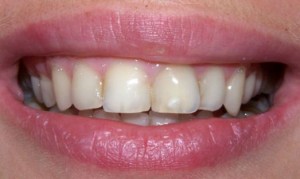 |
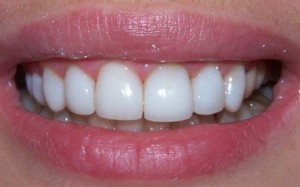 |
 |
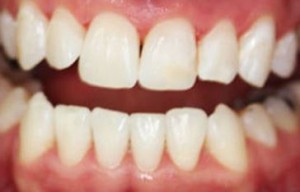 |
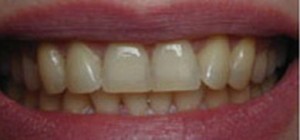 |
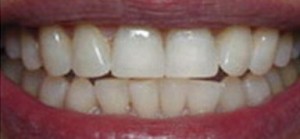 |
Video: “Air Flow Brushing and Whitening”